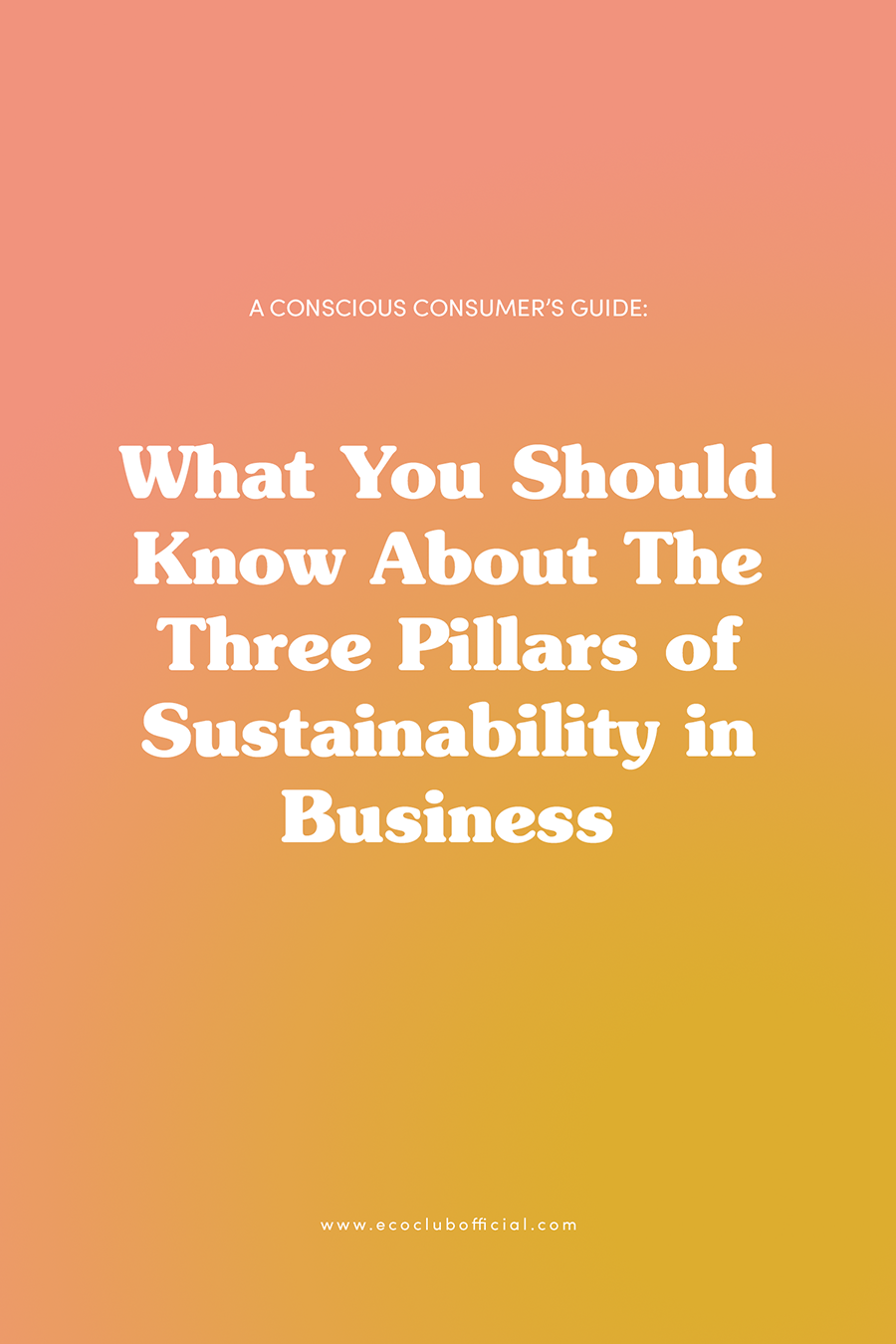We’re in an era where businesses have begun to acknowledge their responsibilities beyond profit margins. Welcome to the three pillars of sustainability, the mainstay of every good business these days. Otherwise known as the ‘triple bottom line,’ the three pillars of sustainability are commonly identified by the three Ps: Profit, People, Planet. Sustainability is, after all, about more than the environment.
For decades, profit has been the beacon of all businesses, with decisions often made which sacrificed the other two ps. While Corporate Social Responsibility has always existed, covering the factors that are accepted, legally and economically, as decent business behavior, it was generally governed by issues required by society, not those desired by it. And nowadays, consumers want to feel good about the purchases they make. Just look at how many people have changed their opinion on single-use water bottles, plastic straws, and q-tips, or made other zero-waste swaps. Everyone should expect corporate policies to extend to ethical and philanthropic responsibilities. We can drive positive change, both with responsible business owners at the helm and as consumers making enough noise that the ones in the back take notice.
Because when companies commit to upholding all three of these values equally, magical things can happen.

pillar one: profits – for the economy
Consumerism gets a bad rep in sustainability conversations, but the truth is, humans do need some stuff. It’s not even wrong to want stuff. But we cannot purchase those needs and wants if a business is unable to turn over a profit, making the business unsustainable. Companies aren’t inherently bad, but most of them can do better—and we can help demand that.
More evident than ever is the strong case for becoming more ethical and sustainable for any business. Choosing sustainable practices still drives long term revenue because companies perceived to have social and environmental purpose are rewarded with more satisfied, loyal customers.
But in terms of running a business, sustainability is not more expensive. Saving energy always equates to saving money, as does reducing waste and cutting out inefficient business practices. Looking at sustainability as a source of abundance, not lack, creates sustainable economic values that drive economies forward.
pillar 2: people – for society
How many of us still purchase $4.99 t-shirts without a second thought as to who made them? Or even worse, we do think about the low wages and poor working conditions but buy it anyway. That’s not to say we don’t care, but perhaps the business we work for pays minimum wage too, and that’s all we can afford. And so, the cycle goes on and on.
From supply chains to upper management, people have long been left behind in the workplace. But there are ways to ensure people are treated humanely, as equals. Businesses that choose to foster entrepreneurship, allow flexible working, and celebrate diversity create caring, collaborative workplaces that thrive with trust, transparency, and loyalty. And when every person that a business relies on is valued, everyone benefits. This pillar asserts the significance of a sustainable society beyond economics, where everyone is well looked after, healthy, and developing together.
pillar 3: planet – for the environment
The strength of the three pillars of sustainability is in their equivalency. Each one matters. Through the planet pillar, businesses seek to avoid depleting natural resources and protect biodiversity and ecosystems. And this matters not just to the planet, but to people too. We are part of the natural world and are not immune to changes to it. Protecting the natural world looks different depending on the industry, but environmental action can start small and still have a hugely positive effect. Even a freelancer working from home can commit to using recycled goods, green web hosting, and efforts to restrict their energy use.
Because as a whole civilization, we are not the villains in the climate crisis; rather, we are the antagonist. But antagonists can be redeemed.
Scientists first became concerned about rising temperatures in the 1820s, with the greenhouse effect proven by Irish physicist John Tyndall in 1861. This rising global temperature was sparked by the Industrial Revolution and its use of coal on an industrial scale, leading to our reliance on fossil fuels. By 1988, scientists began to understand the severity of the situation. In that year, which also saw the formation of the Intergovernmental Panel on Climate Change (IPCC), Dr. James E Hansen and other scientists’ testimony to the US Senate was a pivotal moment. Hansen famously stated, “What we are doing to the future of our children, and the other species on the planet, is a clear moral issue.”
Sadly, industries hindered the complexity and urgency of climate change. Companies continued to focus on profit and ultimately ignored, and even discredited, science. Climate change cannot be denied anymore. Although greenwashing remains prevalent, more and more existing companies are evolving their policies, procedures, and production. Meanwhile, new companies are starting out with the three pillars at the heart of their business plans.
Sustainability is the only way to protect long term profitability. What use is an economy on a planet that is too far gone? Check back tomorrow for our follow up post on how to use the three pillars of sustainability to inform your purchasing decisions!
your two cents